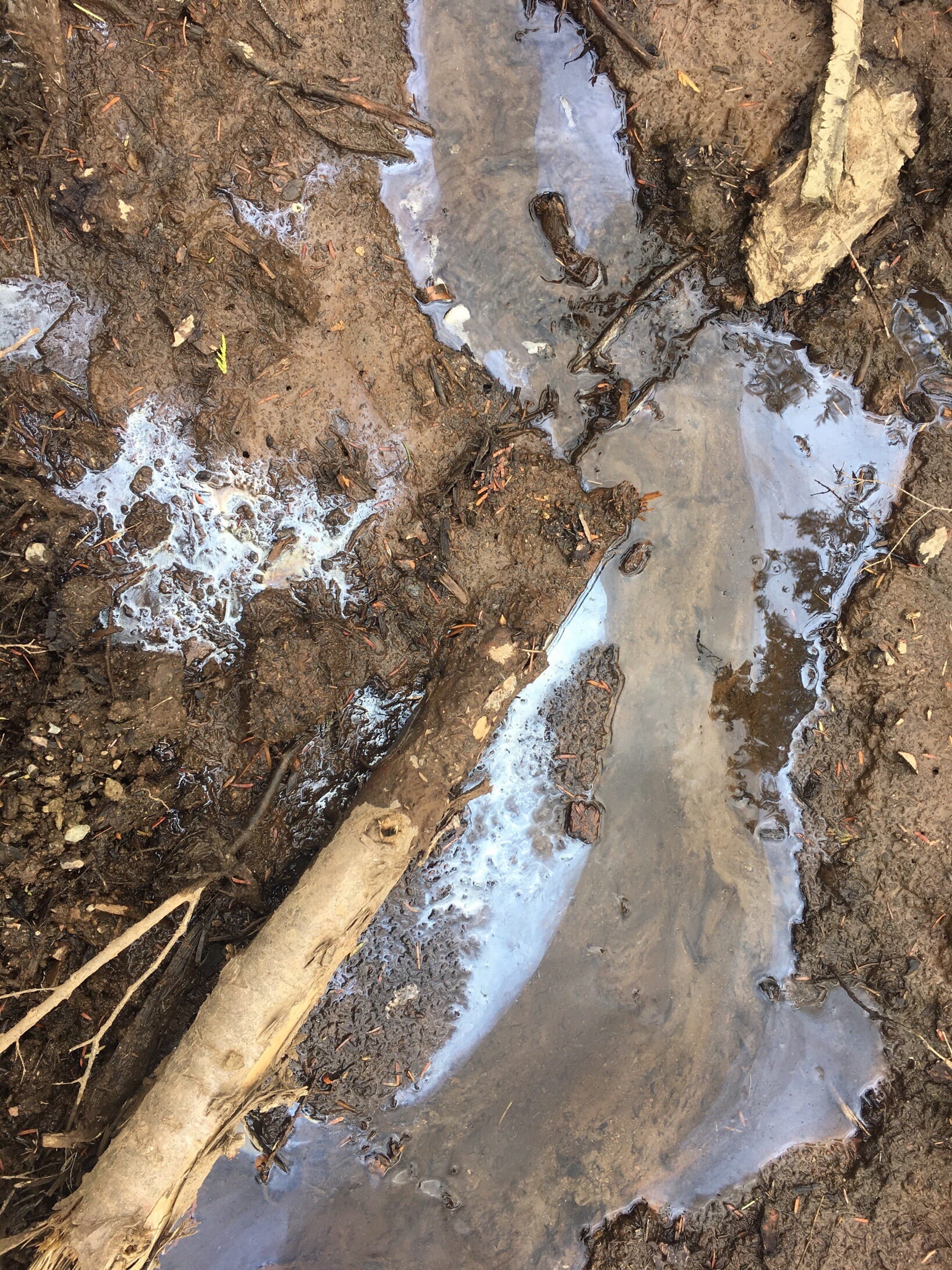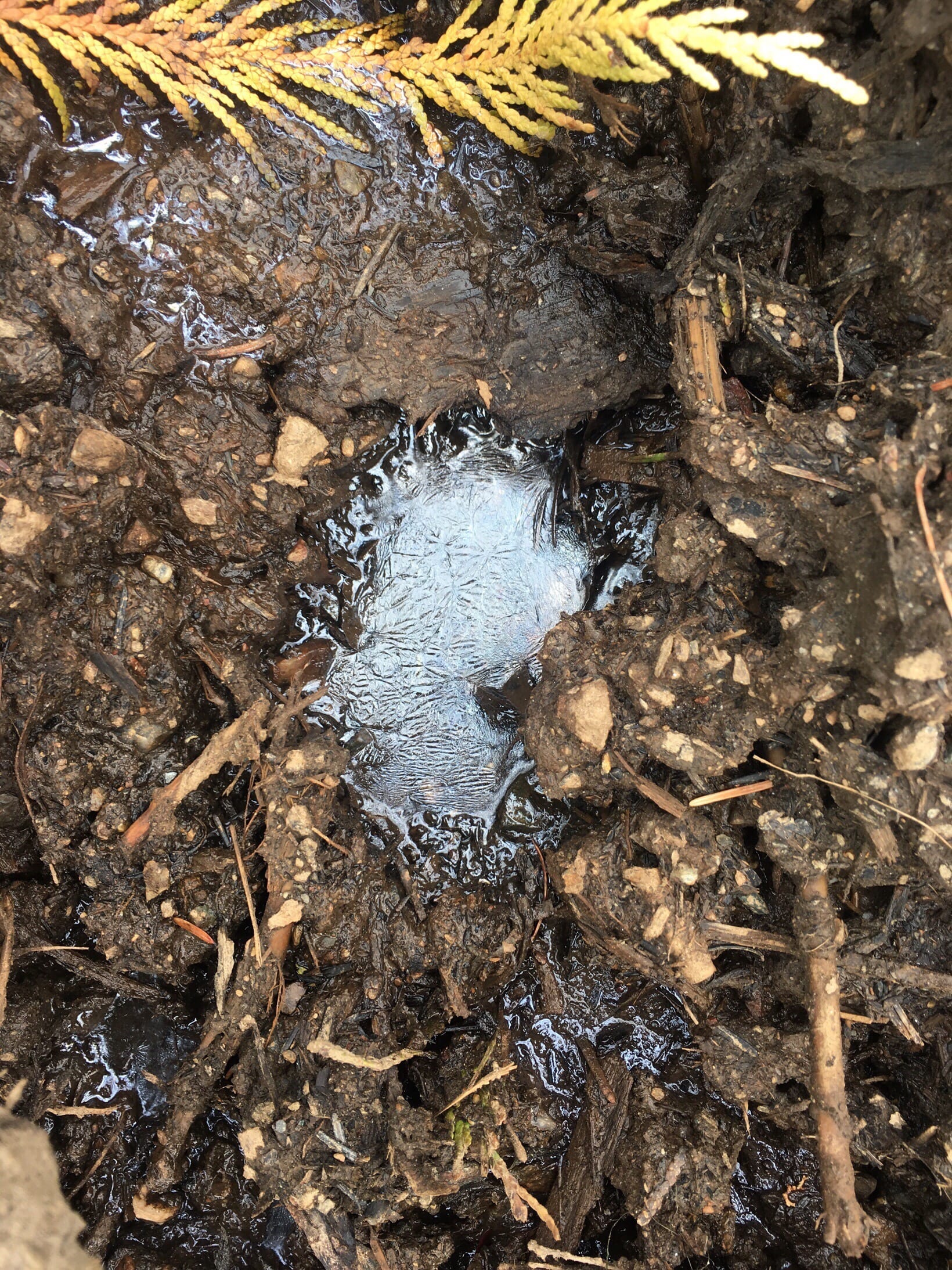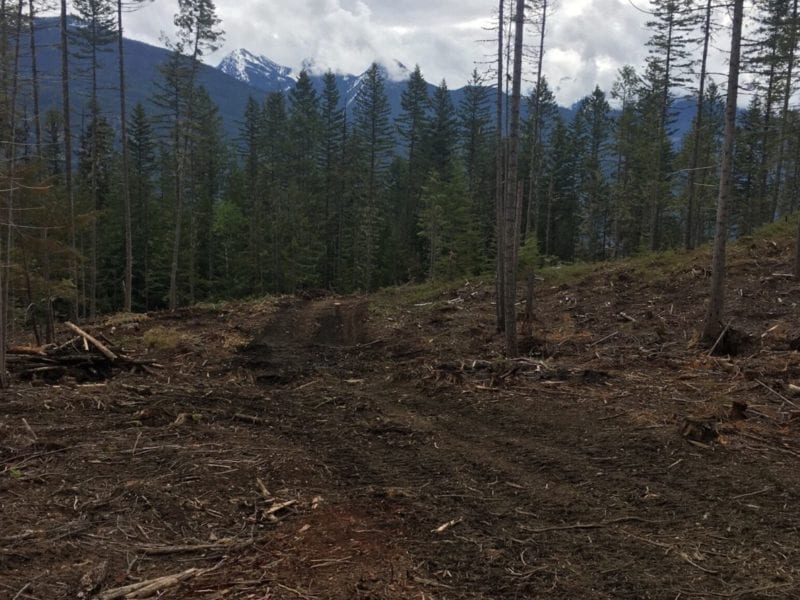We recently investigated a potential petroleum spill in a small seep area at one of our skid trails.
I had traveled though this saturated area with my ATV repeatedly to action a small wildfire by the lookout below. You can see the track in the picture.

At the time there was no contamination visible in the wet soil, it however appeared a short time after.
The wet area is soft and the organic soil was churned as we passed through with heavy loads of water and gear. Hydrocarbon films can be produced naturally by bacterial action in organic matter in the absence of oxygen. I have observed this phenomenon before in areas untouched by motorized equipment.


Deceptively similar looking, petroleum films tend to swirl and reform, while natural oils don’t. They break up into little angular platelets – which is what happened when I disturbed this film. Although I tried to scoop a good load up on my fingers there was no greasiness at all to the touch. I also detected no smell, which is fairly noticeable with petroleum products.


From Clemson University (https://www.clemson.edu/extension/water/stormwater-ponds/problem-solving/muddy-turbid-water/index.html) “Hydrocarbons and oils are usually the other source of surface films in ponds. Oils are produced naturally by the decay of leaves, algae and organic matter, but these oils behave differently from cooking oil or motor oil. To determine if the oil sheen you see on your pond is from a natural organic source, poke it with a stick. If it is from the decay of leaves and other organics, it will most likely crack and shatter like a thin layer of glass and will not reform as the stick is removed. If it reforms or does not shatter, it is likely from automotive or cooking oils that have washed into the pond. “


 Careful with Campfires !
Careful with Campfires !